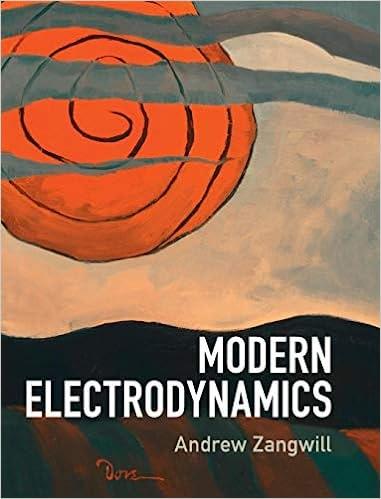In 1880, Rudolf Clausius proposed a Lagrangian for a collection of charged particles moving in an external
Question:
In 1880, Rudolf Clausius proposed a Lagrangian for a collection of charged particles moving in an external electromagnetic field. If rαβ = rα − rβ, the Clausius Lagrangian is

(a) Show that LC follows from the Lagrangian L0 for a collection of charges in an external field if one uses
the static forms for the scalar potential and vector potential. What choice of gauge is implied by this
construction?
(b) The Clausius approximation does not provide a consistent description of Maxwell’s electrodynamics
to O(v2/c2). To do better, Charles Darwin (grandson of the biologist) chose the Coulomb gauge so the neglect of retardation in the scalar potential is exact. In this gauge, the vector potential is calculated using the transverse current density j⊥(r, t) rather than the total current density j(r, t) (See Section 15.3.2). Neglect retardation (why?) and expand the vector potential and the relativistic particle Lagrangian to O(v2/c2) and derive thereby the Darwin Lagrangian:

If ∇k = ∂/∂rk,

Step by Step Answer:






